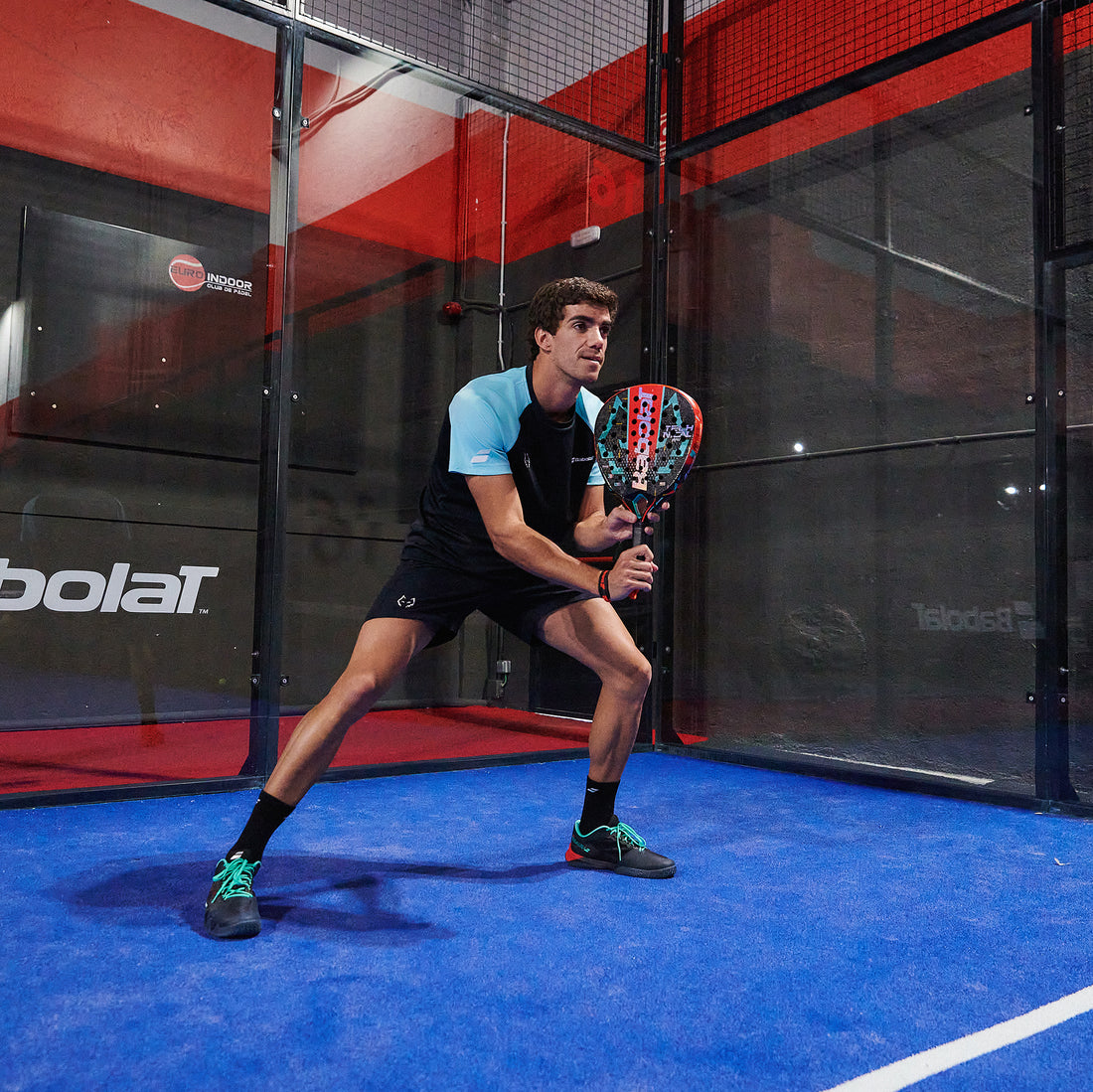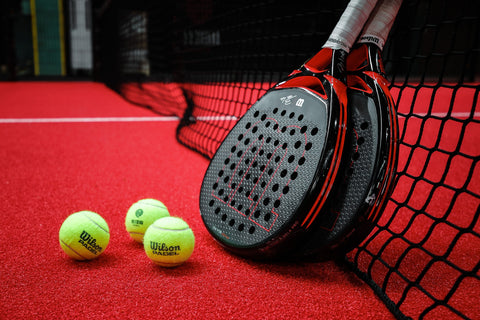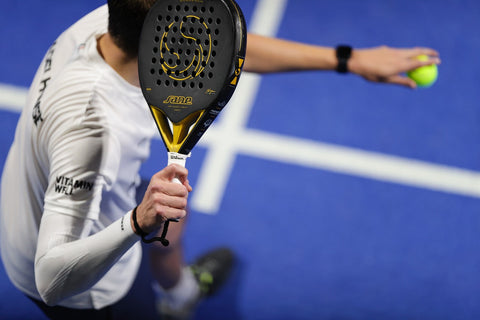
What is Padel Tennis : A Sport That Is Capturing the Heart of Canadians
Share
Tenniszon presents padel-tennis, a sport growing in popularity in Canada. Discover why it’s all the rage in Europe and why it will make you forget about pickleball!
What is Padel tennis?
Padel is a dynamic and entertaining racquet sport that originated in 1969 in Acapulco, Mexico. Its inventor, Enrique Corcuera, a passionate Mexican businessman in sports, aimed to create a more accessible racquet game than tennis while providing a high level of competitiveness and enjoyment. Enrique Corcuera designed padel by drawing inspiration from various existing sports, including tennis, squash, and badminton.

What are the rules of padel?
To learn how to play padel, here's a summary of the rules:
Player Positions
Padel is primarily played in doubles. The receiving player can position themselves anywhere in their court, as can their partner who is not receiving the service. The server's partner can also position themselves wherever they wish in their court. Only the server must be behind the baseline, either to the left or the right of the centerline. The receiver positions themselves diagonally across from the server.
Scoring
The scoring is similar to tennis: "15", "30", "40". At 40-all, the "decisive point" rule may apply depending on the competition. Matches are typically played in three sets (the first to win two sets wins the match). A set is usually won with a two-game lead, although this may vary depending on the competition format.
Service
The serve is done "underhand", with two possible attempts. The ball first bounces behind the server's service line and is then hit below the waist. The ball must bounce in the opposite service box before being returned. Specific rules apply if the ball touches the fencing or other surfaces before its first or second bounce.
Exchange and Bounce
Except for the serve and its return, the ball can be volleyed. The ball is allowed only one bounce on the ground. After this bounce, it can touch any surface except the ground of the side that struck it. The fencing, walls, and even the door handle are part of the court. If the ball bounces a second time on the ground, the point is lost. The ball can be played even outside the court as long as it hasn't bounced a second time. Once in play, all balls crossing the net must first touch the ground before touching a wall. Just like in tennis, the ball can only bounce once in your court, and it can only be hit once.
What differentiates padel from other racquet based sports?
Court and Walls
The padel court is smaller than a tennis court, measuring 10 meters wide by 20 meters long. In comparison, a standard tennis court measures about 24 meters in length. Unlike tennis and squash, the padel court is surrounded by walls, usually made of glass or concrete, which allow the balls to bounce off after hitting the walls. This adds a strategic dimension to the game.
Balls and Racquets
Padel balls are generally smaller and less bouncy than tennis balls, making the game more controllable. Padel racquets are perforated and typically stringless. They are shorter and lighter than tennis racquets, making them easier to maneuver and allowing for quick movements.
Ball Touches
Padel is unlike tennis, where balls can be played after a single bounce, and squash, where balls are played after a single bounce on the floor. In padel, balls can bounce off the walls after the initial bounce on the floor before being played.
Strategy
Due to the walls, exchanges in padel can be longer and more varied in terms of ball trajectories. Padel strategy often involves skillful use of the walls to surprise opponents, sending the ball along the walls for challenging angles.
Doubles Play
Padel particularly favors doubles play, with court dimensions and rules that encourage collaboration and coordination between partners.
The Evolution and Popularity of Padel
The evolution and popularity of padel have followed an incredible trajectory since its creation in the 1960s. Here's how this sport has evolved and gained popularity over the decades:
1960-1980: Origins and Development
- Padel was created in 1969 by Enrique Corcuera in Mexico. It initially gained popularity among affluent social circles and private sports complexes.
1970s: Expansion in Spain
- Padel gained massive popularity in Spain in the 1970s, becoming a widespread and accessible sport to a broad audience, thanks to Prince Alfonso de Hohenlohe. Driven by his passion for the sport, the prince decided to open a padel club in Marbella.
- Padel clubs began to develop throughout the country, offering modern facilities for practicing the sport.
1990s-2000s: International Growth
- Padel started spreading beyond Spain, reaching other European and Latin American countries.
- National padel federations were established to organize competitions and establish standardized rules.
2000s-2010s: Global Expansion
- Padel continued its globalization, gaining popularity in Asia, North America, and other regions.
- Professional tournaments and international padel championships emerged, attracting high-level players and strengthening the sport's visibility.
2010s-2020s: Increasing Notoriety
- Padel became one of the world's fastest-growing sports, with thousands of clubs and courts scattered across over 100 countries.
- The development of padel facilities also contributed to the sport's growth in places where it wasn't traditionally practiced.
- Social media and streaming platforms enabled the broadcasting of padel tournaments to a global audience.
Present and Future: Pursuit of Olympic Recognition
- Padel's popularity keeps growing and attracts players of all ages and skill levels.
- Efforts have been made to have padel recognized as an Olympic sport, which could potentially further enhance its global visibility.
Why Learn Padel Tennis?
Accessibility
Padel is accessible to players of all ages and skill levels. The smaller court size and use of walls make it easier for beginners to get into the game, even for novices.
Social Interaction
Padel is often played in doubles, fostering a social atmosphere. It's an excellent way to spend time with friends or make new connections both on and off the court.
Fast-Paced Action
The smaller court dimensions and wall usage result in rapid exchanges and exciting rallies. The dynamic nature of the game keeps players engaged and energized.
Tactical Challenges
Padel combines elements of tennis and squash with unique wall strategies.
Players must think creatively and strategically to outmaneuver their opponents.
Less Impact on Joints
The smaller court size and forgiving ball make padel a sport that is gentler on the joints compared to sports like tennis, making it a suitable option for individuals with joint issues.
Community
Padel communities are growing worldwide. Joining a padel club or group allows you to connect with others who share your interests.
Adaptable for All Skill Levels
Whether you're a casual player or seeking a competitive challenge, padel can be adjusted to your skill level and preferences.
Unique Experience
The combination of court layout, wall dynamics, and gameplay creates a distinctive experience that sets padel apart from other racquet sports.
How to play padel-tennis in Canada?
As the sport becomes more and more popular, padel-tennis clubs have been opening up throughout the country. The international padel federation has created a list of clubs in which to play padel-tennis. Notably, this list includes T10 in Vaughan Ontario, Club Padel in Montreal, Lake Country Padel in British Columbia and more.
Do not hesitate to come and see us in store to learn more about the sport of padel and to benefit from our team's expertise. Tenniszon offers you an incomparable selection of models and brands of padel racquets... always at the best prices.
Signed,
The Tenniszon team.

